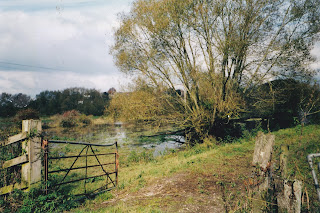RAF Mountbatten
RAF Mount
Batten
In honour bound
Nudging gently out into the waters of the Plymouth Sound is
a headland which was out of bounds to the public for 80 years. This small piece
of rock played a vital role in world events and in the defence of the nation.
The area had been popular with walkers from Plymouth
The air station was commissioned as flying boat base RNAS Cattewater before transitioning
to RAF Cattewater. In the lull between the wars
the base was renamed RAF Mount Batten. The outcrop of rock had been known as Mount Batten
The land was covered with the hangars, workshops and all the
supporting buildings needed for a busy airfield. A large slipway was
constructed to get the planes in and out of the water for repairs. The flying
boats themselves were moored out in the Cattewater bay at the mouth of the
river Plym. Massive concrete blocks under water acted as anchors with wires
holding the buoys in place. The area which was previously known for its
shipbuilding now became known for its flying boats.
Mooring blocks now used as a sea wall
|
The outbreak of the Second World War saw a further increase
in activity on the base. Seaplanes regularly took off and landed along the Sound,
mooring in the Cattewater within spitting distance of the Barbican. The planes
themselves when out of the water would be stored along the Mount Batten
The impact of bombing raids on Plymouth Mount Battten
Now redeveloped this is where the workshops stood
|
Bits of the past are interwoven with the leisure development
that now dominates the area. When you start looking it is possible to pick out
half covered parking spaces, mooring buoys, concrete mooring blocks and the
abandoned foundations of buildings. The main slipway is now used to launch
pleasure craft and the hangars built to house the flying boats now house a
variety of boat related businesses.
 |
| Mooring buoy for a Sunderland flying boat |
The base finally closed in the 1990's and lay abandoned for a short while being reopened to the public and redeveloped. A large memorial now stands close to the area which was
previously the parade ground, a symbolic propeller acknowledging the debt owed
to all those who served here between 1913 and 1992.








Comments
Post a Comment